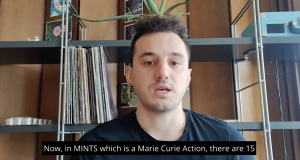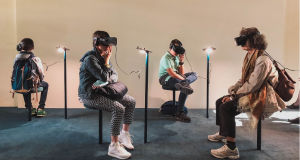Published on: Oct 1, 2021
There is no doubt that wireless communication is essential to our daily lives. We understood this even more during the pandemic. The world has been combating the COVID-19 pandemic for a long time now and what has become obvious to all of us is the importance of technology and robust connectivity in our lives. When we have a big presentation or meeting at work, we can all appreciate the value of a reliable internet connection; a bad connection is difficult to get through!
According to Ericsson’s mobility report for June 2021 [1], 4G/LTE networks have the highest number of subscribers compared to any other service, and in the first quarter of 2021 there was an increase of roughly 100 million 4G subscribers. Also, it is expected that by the end of 2021, the number of 5G subscribers will reach 580 million. This number would further rise with the deployment of 5G services in different parts of the world and the increase in the manufacturing of 5G-supported devices.
Enabling mmWave for the next generation of mobile devices will increase cellular network performance and reliability. mmWave communication technology is not largely deployed yet, despite its immense potential. The susceptibility to obstacles, limited coverage, and high path loss are the main factors.
mmWave can perform very well in the case of a line-of-sight (LOS) link but the real challenge starts when the transmitter (Tx) and the receiver (Rx) have a non-line-of-sight (NLOS) link. When there are blockages, mmWave systems become unreliable and users who are expecting a connection from the Tx will face a considerable degradation in the signal quality. This is where Reconfigurable Intelligent Surfaces (RISs) can help tackle the problem practically and cost-effectively. If you are interested in knowing more about what RISs exactly are, you can check our blog post [2] where we covered the basics of RISs. To better understand the use cases for RISs, consider a system with an NLOS link where there is a blockage or barrier between the Tx and the Rx, which prevents the establishment of a direct connection. By deploying an RIS between the Tx and the Rx, the signal is reflected to the desired direction based on predefined configurations. An example of an outdoor scenario providing a direct connection using an RIS is depicted in Figure 1.
 Figure 1. An outdoor scenario, where an RIS is deployed on the walls of a house in order to provide connection between the source and the destination, which have a blocked link in between [3]
Figure 1. An outdoor scenario, where an RIS is deployed on the walls of a house in order to provide connection between the source and the destination, which have a blocked link in between [3]
RISs have become a hot topic among wireless communication researchers in the past years and they are drawing a lot of attention for future research. This motivates us to pose three challenges with RISs and give some insights on research directions. These challenges include RIS placement, RIS and mobility, and RIS reflection optimization.
RIS Placement
The placement of the RIS reflecting elements has a considerable impact on the system performance. With the correct RIS placement, we can design appropriate RIS channel coefficients based on the location of the RISs. Few works have addressed the issue of RIS placement but still more work has to be done in this area. Moreover, in case of practical implementations: hardware cost, location availability, and user distribution have to be considered for RIS placement [4]. In general authors mostly consider the two cases of centralized or distributed placement strategies and compare the overall system performance for each of the cases [5]. As a result, considerations like whether to pursue a “Centralized” or “Distributed” strategy for RIS deployment, as well as whether there is a limit to the number of RISs that can be installed in a particular area before they start interfering with one other, must be addressed [6].
RIS and mobility
RISs can be in mobile scenarios, however they come with some challenges. Mobility challenges in RISs can be considered for the scenarios where a user is moving inside a building which is equipped with fixed or moving RISs. As a result it can be addressed by two approaches. The first one would be considering the idea of having RISs as mobile reflecting elements which can move around inside a building (as robots) or outdoors on the street (e.g. vehicles). For the indoor scenario, a robot can be deployed inside a building with RISs installed on it. This robot can wander around the rooms of a building and search for users with poor connection and provide LOS links for them. The second approach to address this scenario can be the deployment of more than one RIS such that the signals are reflected from one RIS to the other creating an optimal connection for the mobile users. Considering the day-to-day increase in the number of users in both the indoor and outdoor scenarios, addressing the mobility challenges in RISs can be a good research direction.
RIS reflection optimization
The last important challenge that comes with RISs is the optimization of the reflection coefficient matrix. Base stations are in charge of defining the reflection coefficients for the RIS and sending it back to the RIS via its controller [7], but the design of optimal reflection coefficient matrix under different scenarios, assumptions, and system models, is still a big challenge. The optimization is usually done concerning different metrics of the system which can include sum rate, energy efficiency, and capacity region. Depending on the choice of metrics, the optimization problem can get complex and most of the time the problem is non-convex (because of the correlation of the variables to each other). As a result, advanced optimization techniques and tools must be used to address the problem.
Conclusion
RIS is a promising technology which is anticipated to solve some of the current issues in 5G and beyond networks. Our hope is that the existing challenges with RISs can be solved by researchers and soon we can use RISs to achieve higher data rates and reliability.
If you were able to stick until the end and can’t wait for more content and you also want to know about us and our projects, you can always follow our social media channels.
Citations:
[1]Erricsson’s Mobility report June 2021: https://www.ericsson.com/49e50d/assets/local/mobility-report/documents/2021/june-2021-ericsson-mobility-report.pdf
[2] https://b5g-mints.eu/ris-blog6/
[3] H. Du, J. Zhang, J. Cheng and B. Ai, “Millimeter Wave Communications With Reconfigurable Intelligent Surfaces: Performance Analysis and Optimization,” in IEEE Transactions on Communications, vol. 69, no. 4, pp. 2752-2768, April 2021, doi: 10.1109/TCOMM.2021.3051682.
[4] C. Pan et al., “Reconfigurable Intelligent Surfaces for 6G Systems: Principles, Applications, and Research Directions,” in IEEE Communications Magazine, vol. 59, no. 6, pp. 14-20, June 2021, doi: 10.1109/MCOM.001.2001076.
[5] S. Zhang and R. Zhang, “Intelligent Reflecting Surface Aided Multi-User Communication: Capacity Region and Deployment Strategy,” in IEEE Transactions on Communications, doi: 10.1109/TCOMM.2021.3079128.
[6] M. A. Kishk and M. -S. Alouini, “Exploiting Randomly Located Blockages for Large-Scale Deployment of Intelligent Surfaces,” in IEEE Journal on Selected Areas in Communications, vol. 39, no. 4, pp. 1043-1056, April 2021, doi: 10.1109/JSAC.2020.3018808.
[7] G. Zhou, C. Pan, H. Ren, K. Wang and A. Nallanathan, “Intelligent Reflecting Surface Aided Multigroup Multicast MISO Communication Systems,” in IEEE Transactions on Signal Processing, vol. 68, pp. 3236-3251, 2020, doi: 10.1109/TSP.2020.2990098.





